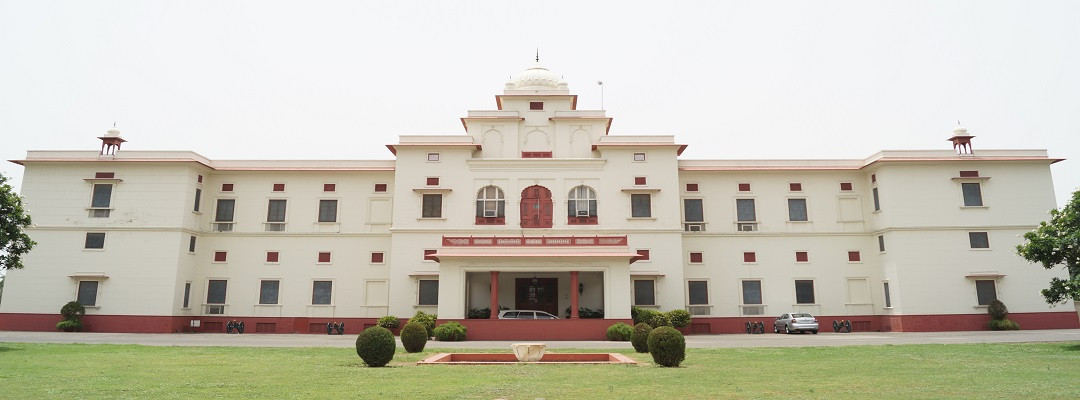Moti Bagh Palace, located in Patiala, Punjab, is a splendid example of Indo-Saracenic architecture and one of the largest residences in India.
Historical Background
–Construction: The palace was constructed in 1847 under the reign of Maharaja Narinder Singh, one of the most prominent rulers of Patiala. It served as a royal residence and a symbol of the state’s affluence.
– Patiala Dynasty: The Patiala royal family was known for its cultural patronage, modern outlook, and architectural vision, which is reflected in the construction of Moti Bagh Palace and other landmarks like the Qila Mubarak and the Baradari Gardens.
Architectural Details
–Style: Moti Bagh Palace is a fine example of Indo-Saracenic architecture, a blend of Indian, Mughal, and European styles.
– Design:
– The palace features large arched entrances intricate jharokhas, and sprawling courtyards.
– The domes and minarets add to the palace’s grandeur, while the symmetry of its design reflects Mughal influence.
– A striking feature is its sheer scale, with over 1,200 rooms spread across several wings.
– Gardens: The palace is surrounded by Moti Bagh Gardens, which are landscaped in the traditional Mughal style with fountains, pathways, and floral arrangements.
Sheesh Mahal
– Location: Within the Moti Bagh complex.
– Unique Feature: Known as the “Palace of Mirrors,” it is decorated with intricate mirror work, frescoes, and miniature paintings depicting scenes from Hindu mythology and courtly life.
– Cultural Hub: The Sheesh Mahal also houses a gallery of paintings, artifacts, and a rare collection of manuscripts.
Netaji Subhas National Institute of Sports (NIS)
– Establishment: Post-independence, a significant part of the Moti Bagh Palace was repurposed to establish the Netaji Subhas National Institute of Sports (NIS) in 1961.
– Facilities:
– Asia’s largest sports institute, offering training in various disciplines.
– Houses a sports museum with exhibits including medals, equipment, and memorabilia of Indian sports legends.
– Significance: It has been instrumental in shaping India’s sports history by training generations of athletes.
Cultural and Historical Significance
– Art and Heritage: The palace and its associated structures reflect the opulence of the Patiala royal family and the rich artistic traditions of Punjab.
– Tourism: A major attraction in Patiala, it draws visitors for its historical, architectural, and cultural importance.
Modern-Day Use
– Royal Residence: While parts of the palace remain in use by the descendants of the Patiala royal family, the other sections are accessible to the public as tourist attractions.
– Cultural Events: The palace occasionally hosts cultural programs, exhibitions, and events that celebrate Punjabi heritage.
– Educational Hub: The NIS continues to serve as a premier institution for sports education and training.
Visitor Information
– Location: Situated in the heart of Patiala city, the palace is easily accessible by road.
– Best Time to Visit: Winter months (October to February) are ideal due to the pleasant weather.
– Nearby Attractions: While in Patiala, visitors can also explore other landmarks like Qila Mubarak, Baradari Gardens, and the Bahadurgarh Fort.


